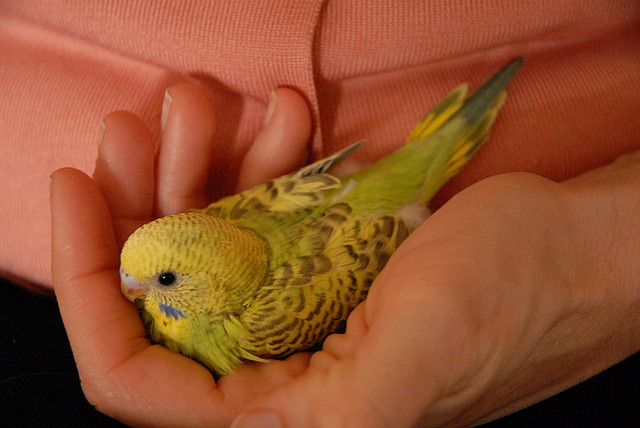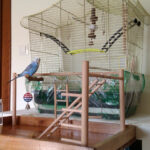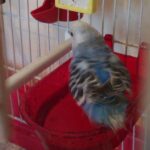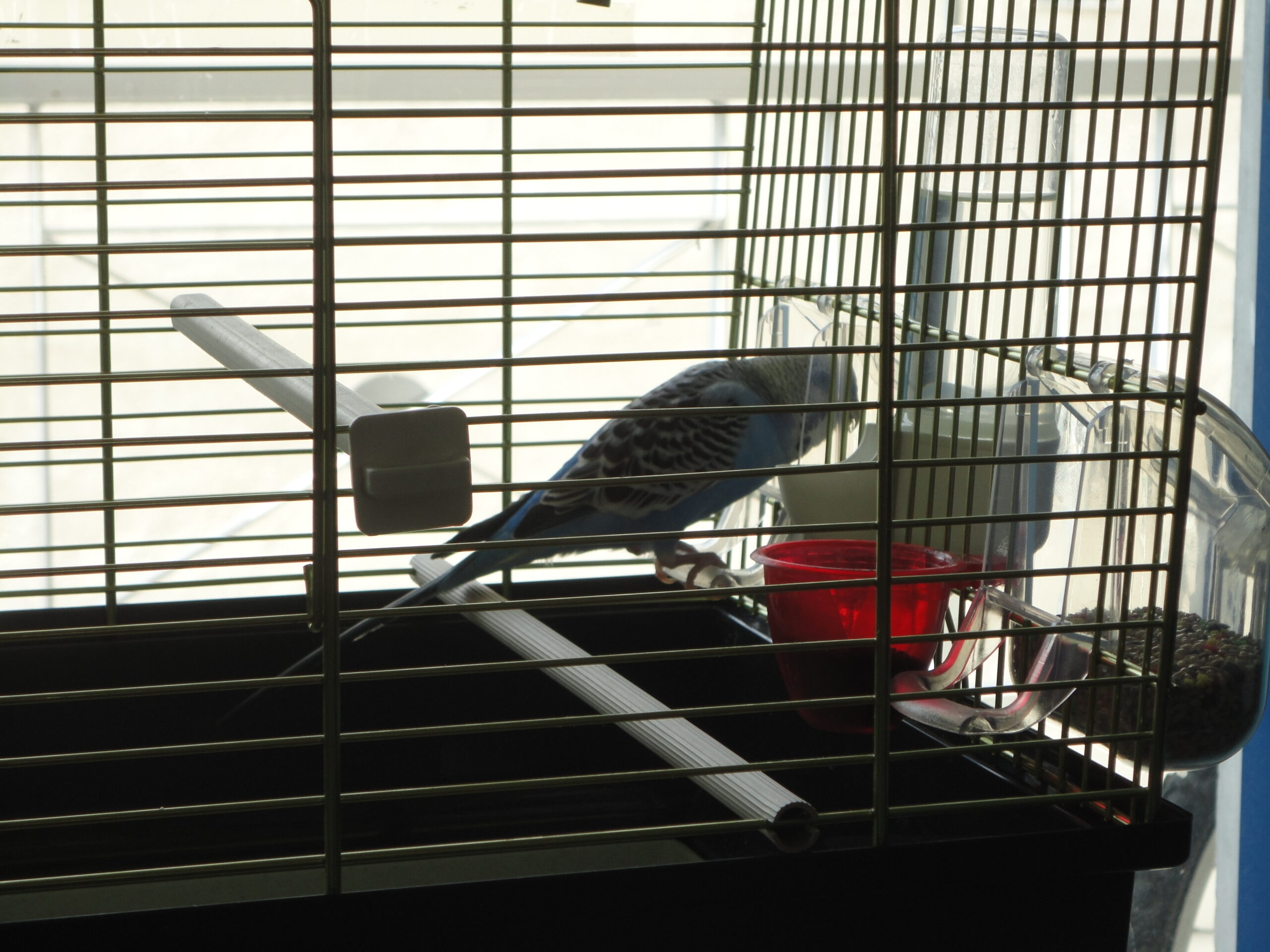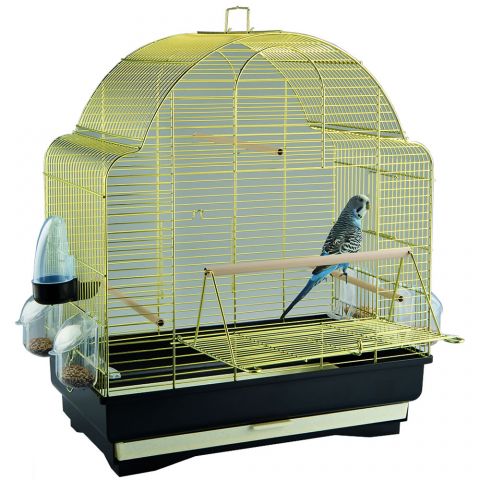Budgie Identification Guide (sex, age and mutations)
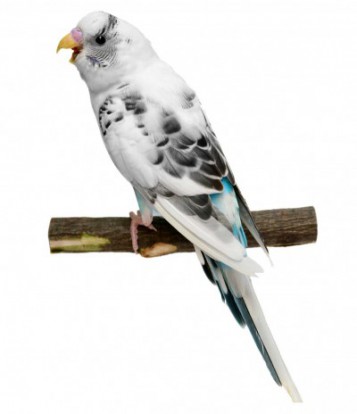
Budgies are very intelligent and playful parrots. They originate from Australia which is their native environment. In the wild, they are very social and live in flocks.In its natural environment a budgie will experience relatively high average temperatures. In general they prefer hot climates although they are very adaptable birds.Budgies are kept as pets for at least 200 years. They make excellent pets and a great companion animal for children and seniors to eliminate their loneliness. As pets they are playful, social and can be hand tamed and be taught to speak words or phrases (they have excellent speaking capability among parrots). They are also easy to clean and care for.
Determining the sex of your budgie:
Determining the sex of an adult budgie is very easy. The color of cere exhibits the gender. The cere is located just above the beak. Knowing the exact age of a budgie helps you to determine their gender. The cere of younger budgies has the same color for both genders and it’s very tricky to determine the age of the budgie. The adult male and females have different cere color which makes the identification process simple. The following tips will help you to determine their sex:
Determine by seeing the cere of your budgie. The adult male budgie has a bright blue color cere at the top of the beak. The male budgies cere is normally bright and predominant. The female budgie has light color cere compared to the male budgie. The female budgie cere also found in light color like light blue, tan, pink or brownish cere. The female budgie cere is rougher than the male budgies. The female budgie is determined by seeing its flaky texture cere.
Observe your budgie behavior:
Observing the budgie behavior helps you to determine their sex. The female young budgies are more aggressive compared to males and territorial. The young male budgie is very playful and more active compared to the females, usually they are singing, playing and will leave the cage easily if given the chance.
Take notes on your budgie:
The male budgies are very interactive, they sing and mimic more than the females budgie. The budgies different kind of sounds continuously and it seems like singing a song for us. The female budgies produce more noise as they are mad. Female budgies can able sing like the male budgies.
Young Male budgie behavior:
The male budgies are very intelligent and responsive. They learn very quickly to follow their master rules and quickly start talking. The male budgie produces continues mimicking than the female budgies. Research says that the male budgie greet their owner with a song during morning and evening.
The core of cere is in blue color. During budgie mating the cere color looks brighter. The male budgie has also fed its female mate. The male budgie is round and large compared to the female budgie. The young male has smaller pupil than the female budgies.
Young female budgie behavior:
The female budgie can make more noise. They cannot able to sing like the male budgies. They female budgie is a little more aggressive than the male budgie. They can produce arrays of sound in the happy mood. It does not respond like the male budgies. The proper and careful training is required for making female budgie to talk. It’s more territorial than the male budgie. It acts like bossy in the flocks. The female budgies are very curious and active. They tend to bite budgie accessories and soft wood material in the cage.
The female budgie’s cere is very lighter than the male ones. During the mating period the cere of the female looks more brownish. The young female also has larger pupil compared to males. The females are aggressive and nervous while appear to be somewhat smaller than males.
Determining age of your budgie:
Finding the age of your budgie is very tricky. Here are some tips to determine your birds age very simply and approximately.
By seeing cap feathers:
The younger budgies have lighter colored bars on their head to cere. At the age of 3-4 months, the feathers on the forehead replaced with the bright colored feathers. The bars in the bird feathers get vanished during the first molt. The birds attain its original color mutation during the period of first molt. The white and yellow headed budgies get free from the dark bars during the first molt.
The albino and pied kinds do not have feathers like a normal budgie, so you cannot determine their age.
Eye factor:
The younger budgies have black colored eyes. As they grow, the pupil of the budgie gradually turns into grey color. The budgie with dark eye is definitely younger than four months. The young budgie have cute look and often found in the pet store around you. The budgies with darker colored eyes are normally four to eight months old. The budgies with light gray color eyes are an adult and ready for budgie breeding.
The albino budgies have red color eyes. The recessive pied budgies have dark eye which cannot change upon the age. It makes determining the bird age difficult. Get these types of budgies from a breeder or trusted local pet store
ID band for your budgie:
The ID band is an excellent way to determine the age of a budgie. The Id band contains many numbers and a few letters. The breeder uses the black band as they know their information personally. The letter from the Id band marks the breeder initial.
The different color budgie band is used to determine the year of budgie born. The colored band gives an exact age of your budgie. The American Budgerigar Society uses a different color to mark the year of budgie born.
Color mutation of your budgie:
Budgies originate from Australia and are kept under captivity since the 18th century. The original wild budgies are yellow with blue feathers. The black bar and strips on the head and wings is the basic mutation in a budgie. The color mutations of budgies have occurred by selective breeding. Some mutations are very common while others are very rare. Here are some color mutations:
Base color:
The budgies base color is two types the yellow pigment base and non-yellow based. The base color of the budgie normally appears in mask feathers and wings. The yellow and blue color pigment in the budgie gives the dark green appearance. The dark green budgies are the most common variety. The blue color is originated from the base color.
Dark factor:
The budgies are differentiated from no dark to two dark factors. The dark factor determines the color mutation of your budgie. The budgie with no dark factor originally in light green. The one dark factors results in dark green budgies. The two dark factor results in deep olive colored budgie. The blue budgies with dark factor result in light color, cobalt color and dark blue budgies.
Gray factor:
The gray factor is an additional color to the budgie. The gray factor is very strong and replaces the original color of the budgie. The gray factor in yellow results in green- gray budgies. The gray factor in white budgie results in pied budgies.
Violet factor:
The violet is added to the original color of the budgie. The white color with one dark factor results in cobalt color budgies. The two dark factor results in sky blue color budgie. The violet color gives a more bluish look to your budgie.
Dilution:
The degree of dark factor in the budgie is called as dilution factor. The dilutions are classified into four types gray wing, full colored wing, dilute and clear win. The dilution gives an additional look to your budgie. The dilution determines the contrast of your budgie color.
Yellow face:
The yellow face budgies normally range between white and yellow colored face. The degree of yellow pigment determines the color of the budgie. The yellow face is classified as type I and Type II. The yellow diffuse in the budgie body color and creates a new color in budgie.
Albino budgies:
The budgies without any color shades and marking are called as the albino budgies. The albino budgies are normally in yellow and white color base. These budgies have red eyes and its difficult to determine their age.
Spangle budgies:
The spangle in the budgies makes markings in the budge wings and feather. They produce different pattern in the base color of budgie. The spangle design adds a little dark factor to the budgie color.
Cinnamon:
The Cinnamon makes the budgie’s head in brown color. The Cinnamon does not affect the color mutation. It gives a different look to your budgie.
Recessive Pied:
The clear feathered budgies are called as the recessive pied. The pied budgies have dark colored eyes it does not get lighten when the budgie grow. It makes the age determination tricky in this type.
Crested:
The crested is unique and rare mutation in the budgies. The crest like pattern on the body of budgie gives a unique look. The crest is normally differentiated in their types crest on heat, feathers and full body.
Combinations:
The different budgie mutations makes combinations practically limitless.
If you wish to learn more about choosing a budgie please read this article


